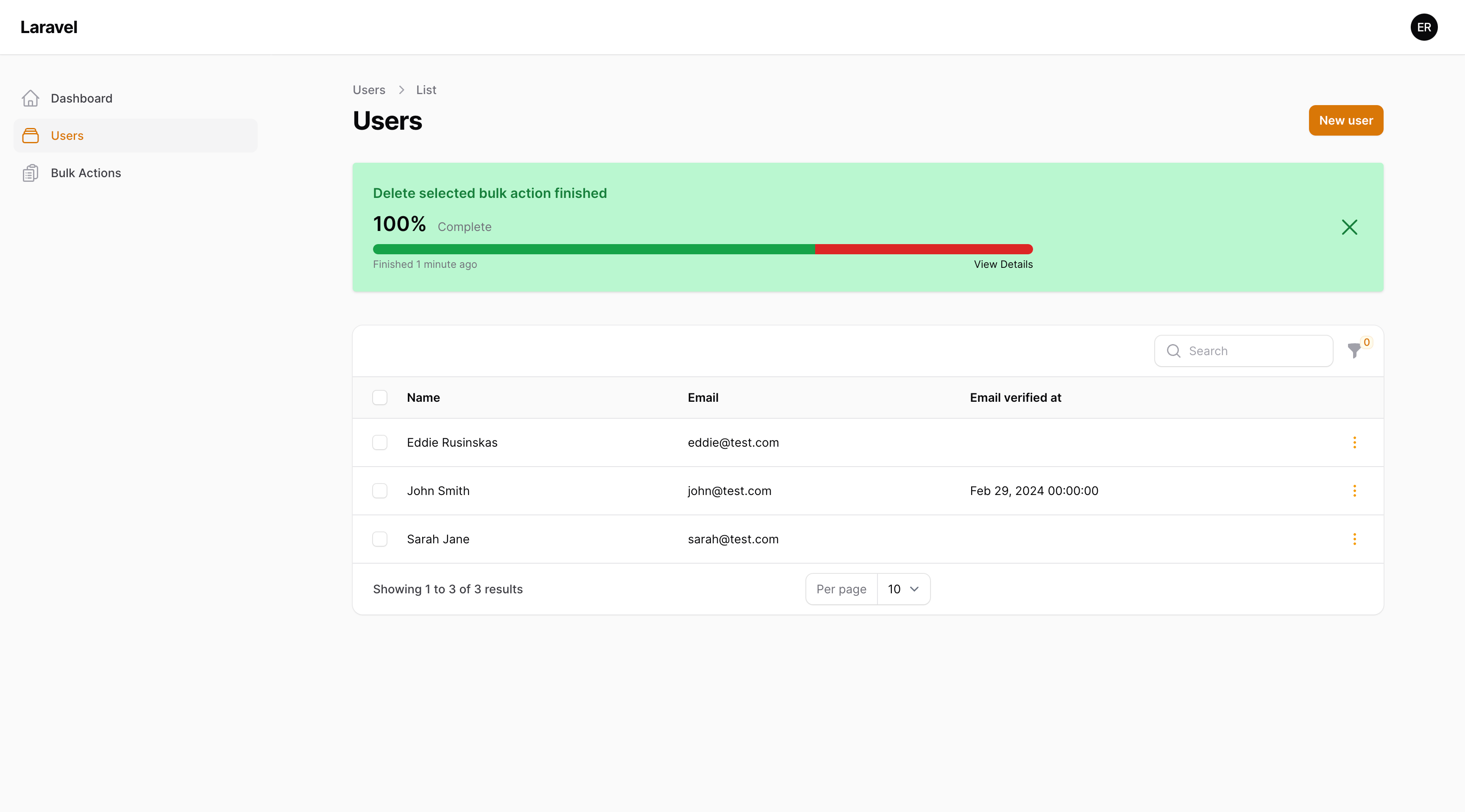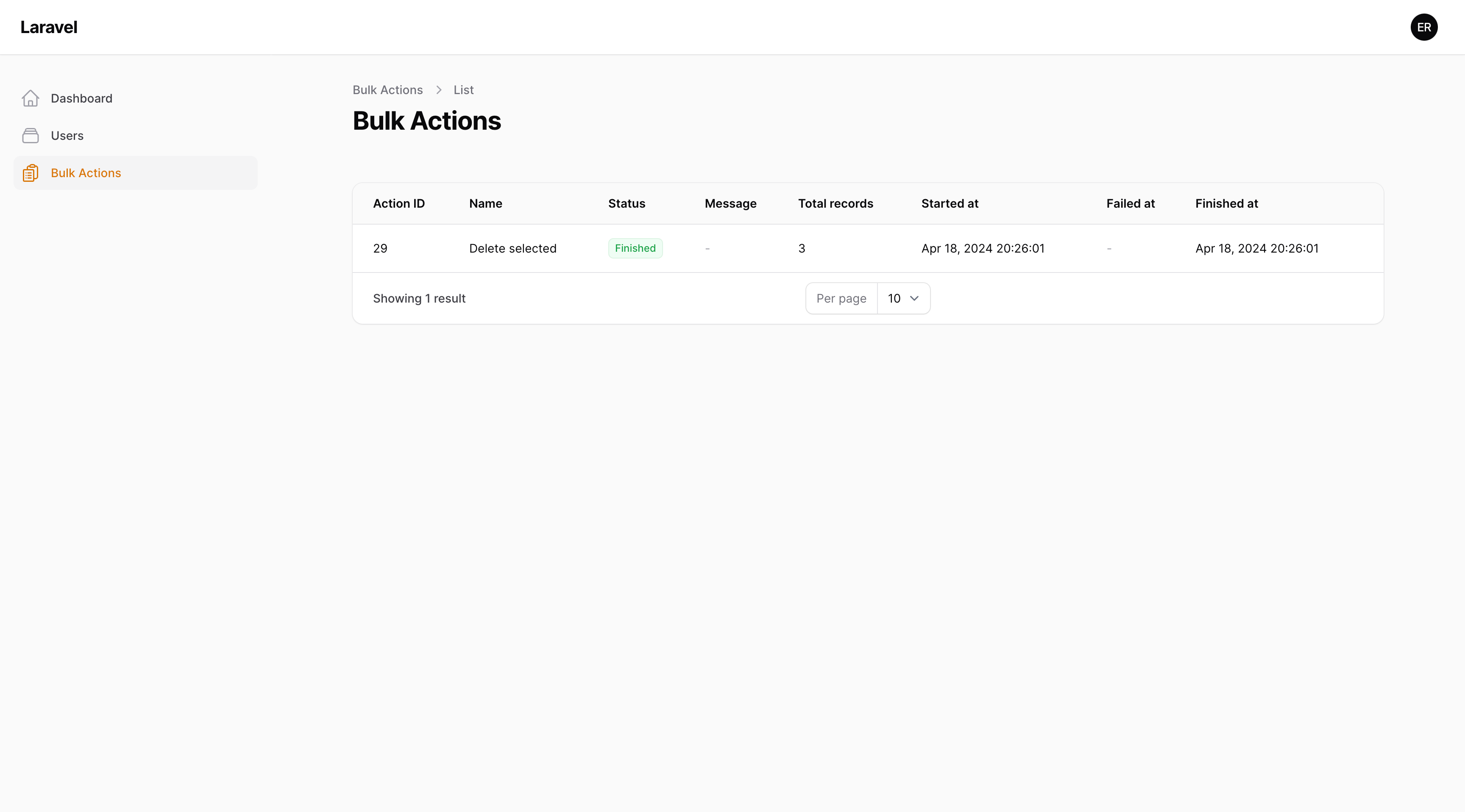aliheidarian1984 / filament-queueable-stack-actions-legal
This Filament plugin simplifies managing stack operations asynchronously in a queue. It provides tracking and status updates for tasks, while supporting both action calls and job dispatches. Excellent for stack data updates and tasks with Filament & Livewire support for real-time notifications.
Installs: 7
Dependents: 0
Suggesters: 0
Security: 0
Stars: 0
Watchers: 1
Forks: 0
Open Issues: 0
pkg:composer/aliheidarian1984/filament-queueable-stack-actions-legal
Requires
- php: ^8.1
- filament/filament: ^3.0
- filament/tables: ^3.0
- spatie/laravel-package-tools: ^1.15.0
Requires (Dev)
- laravel/pint: ^1.0
- nunomaduro/collision: ^7.9
- nunomaduro/larastan: ^2.0.1
- orchestra/testbench: ^8.0
- pestphp/pest: ^2.1
- pestphp/pest-plugin-arch: ^2.0
- pestphp/pest-plugin-laravel: ^2.0
- phpstan/extension-installer: ^1.1
- phpstan/phpstan-deprecation-rules: ^1.0
- phpstan/phpstan-phpunit: ^1.0
- spatie/laravel-ray: ^1.26
This package is auto-updated.
Last update: 2025-11-26 15:43:47 UTC
README
This Filament plugin simplifies managing stack operations asynchronously in a queue. It provides tracking and status updates for tasks, while supporting both action calls and job dispatches. Excellent for stack data updates and tasks with Filament & Livewire support for real-time notifications.
Installation
You can install the package via composer:
composer require aliheidarian1984/queueable-stack-actions-legal
You can publish and run the migrations with:
php artisan vendor:publish --tag="queueable-stack-actions-migrations"
php artisan migrate
You can publish the config file with:
php artisan vendor:publish --tag="queueable-stack-actions-config"
Optionally, you can publish the views using
php artisan vendor:publish --tag="queueable-stack-actions-views"
Usage
First you will need to register this plugin on your Filament panel
use \Aliheidarian1984\QueueableStackActionsLegal\QueueableStackActionsPlugin; use Filament\View\PanelsRenderHook; \Aliheidarian1984\QueueableStackActionsLegal\Enums\StatusEnum; public function panel(Panel $panel): Panel { return $panel ->plugins([ QueueableStackActionsPlugin::make() ->stackActionModel(YourStackActionModel::class) // (optional) - Allows you to register your own model which extends \Aliheidarian1984\QueueableStackActionsLegal\Models\StackAction ->stackActionRecordModel(YourStackActionRecordModel::class) // (optional) - Allows you to register your own model for records which extends \Aliheidarian1984\QueueableStackActionsLegal\Models\StackActionRecord ->renderHook(PanelsRenderHook::RESOURCE_PAGES_LIST_RECORDS_TABLE_BEFORE) // (optional) - Allows you to change where notification is rendered, multiple render hooks can be passed as array [Default: PanelsRenderHook::RESOURCE_PAGES_LIST_RECORDS_TABLE_BEFORE] ->pollingInterval('5s') // (optional) - Allows you to change or disable polling interval, set to null to disable. [Default: 5s] ->queue('redis', 'default') // (optional) - Allows you to change which connection and queue should be used [Default: env('QUEUE_CONNECTION'), default] ->resource(YourStackActionResource::class) // (optional) - Allows you to change which resource should be used to display historical stack actions ->colors([ StatusEnum::QUEUED->value => 'slate', StatusEnum::IN_PROGRESS->value => 'info', StatusEnum::FINISHED->value => 'success', StatusEnum::FAILED->value => 'danger', ]), // (optional) - Allows you to change notification and badge colors used for statuses. Uses filament colors defined in panel provider. [Default: as show in method] ]); }
To start leveraging the benefits of this package, you'll initially create a job tailored to manage your unique stack action records. This specialized job should inherit from the Aliheidarian1984\QueueableStackActionsLegal\Jobs\StackActionJob class, enabling it to seamlessly employ the features of the package.
<?php namespace App\Jobs; use Aliheidarian1984\QueueableStackActionsLegal\Filament\Actions\ActionResponse; use Aliheidarian1984\QueueableStackActionsLegal\Jobs\StackActionJob; class DeleteUserStackActionJob extends StackActionJob { protected function action($record, ?array $data): ActionResponse { if($record->isAdmin()) { return ActionResponse::make() ->failure() ->message('Admin users cannot be deleted'); } return ActionResponse::make() ->success(); } }
Following that, create a QueueableStackAction and link it to the job you've just created. This process directly assigns the job to the action.
... ->stackActions([ QueueableStackAction::make('delete_user') ->label('Delete selected') ->job(DeleteUserStackActionJob::class) ])
Once set up, this will generate notifications to keep users apprised of your stack action progress on the current page. The information remains visible until manually dismissed, providing an unintrusive user experience.
The notification is contextually aware and will only appear on the page where the action was initiated by the user. This tailored approach keeps things neat and relevant. It comes with an easy dismissal feature; a simple click on 'X' will close the notification.
Even after the task execution, all stack action records are preserved for reference. They can readily be accessed via the StackActionResource, ensuring continuity and availability of information when needed.
Changelog
Please see CHANGELOG for more information on what has changed recently.
Contributing
Please see CONTRIBUTING for details.
Security Vulnerabilities
Please review our security policy on how to report security vulnerabilities.
Credits
License
The MIT License (MIT). Please see License File for more information.



